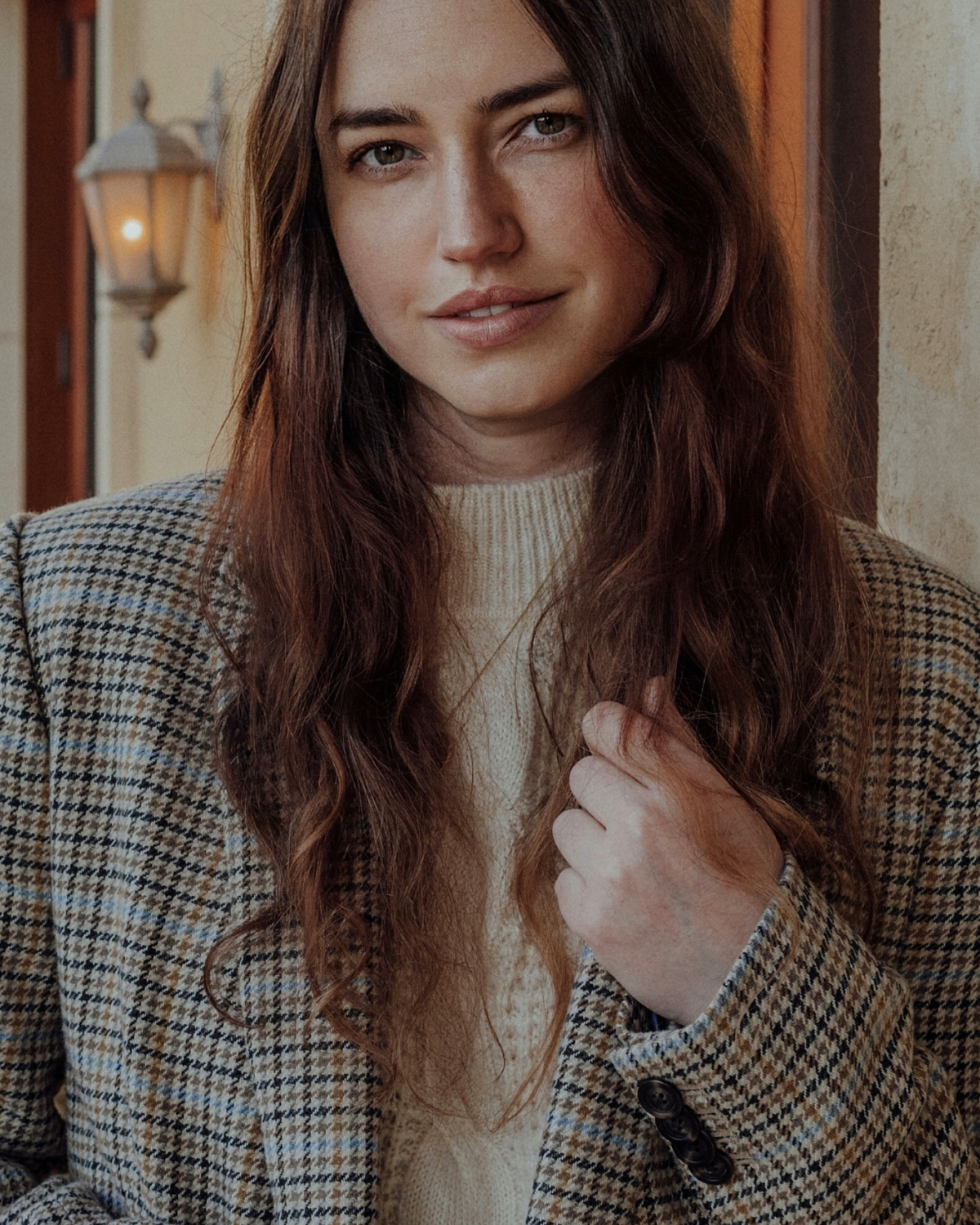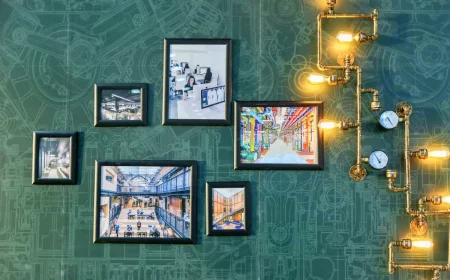Got Stung by a Bee or Wasp? Here’s Exactly What to Do
I’ve spent a couple of decades as a paramedic and outdoor guide, and let me tell you, I’ve seen more bee and wasp stings than I can count. I’ve treated them on kids at summer camp, on landscapers who accidentally ticked off a hidden nest, and on hikers way out in the middle of nowhere. Every situation is a little different, but the right way to handle it is always the same.
In this article
- First Things First: What’s Happening Under Your Skin?
- The First 5 Minutes: Your Action Plan
- How Bad Is It? Normal Sting vs. Real Emergency
- Your At-Home Treatment Plan & When to Get Help
- A Special Note for Kids
- For Known Allergies: The EpiPen Is Non-Negotiable
- How to Not Get Stung in the First Place
- Inspiration:
This isn’t about being scared of bugs. It’s about having the confidence to know what to do, calmly and correctly, when that sharp little surprise happens. My goal is to share the practical, no-fluff knowledge I’ve picked up over the years. We’re going to get right into what works, what doesn’t, and how to spot the difference between a minor pain and a real emergency.
First Things First: What’s Happening Under Your Skin?
To treat a sting right, you have to know what you’re up against. It’s not just a tiny poke—the insect is injecting a nasty little chemical cocktail. Understanding the difference between a bee and a wasp is key.
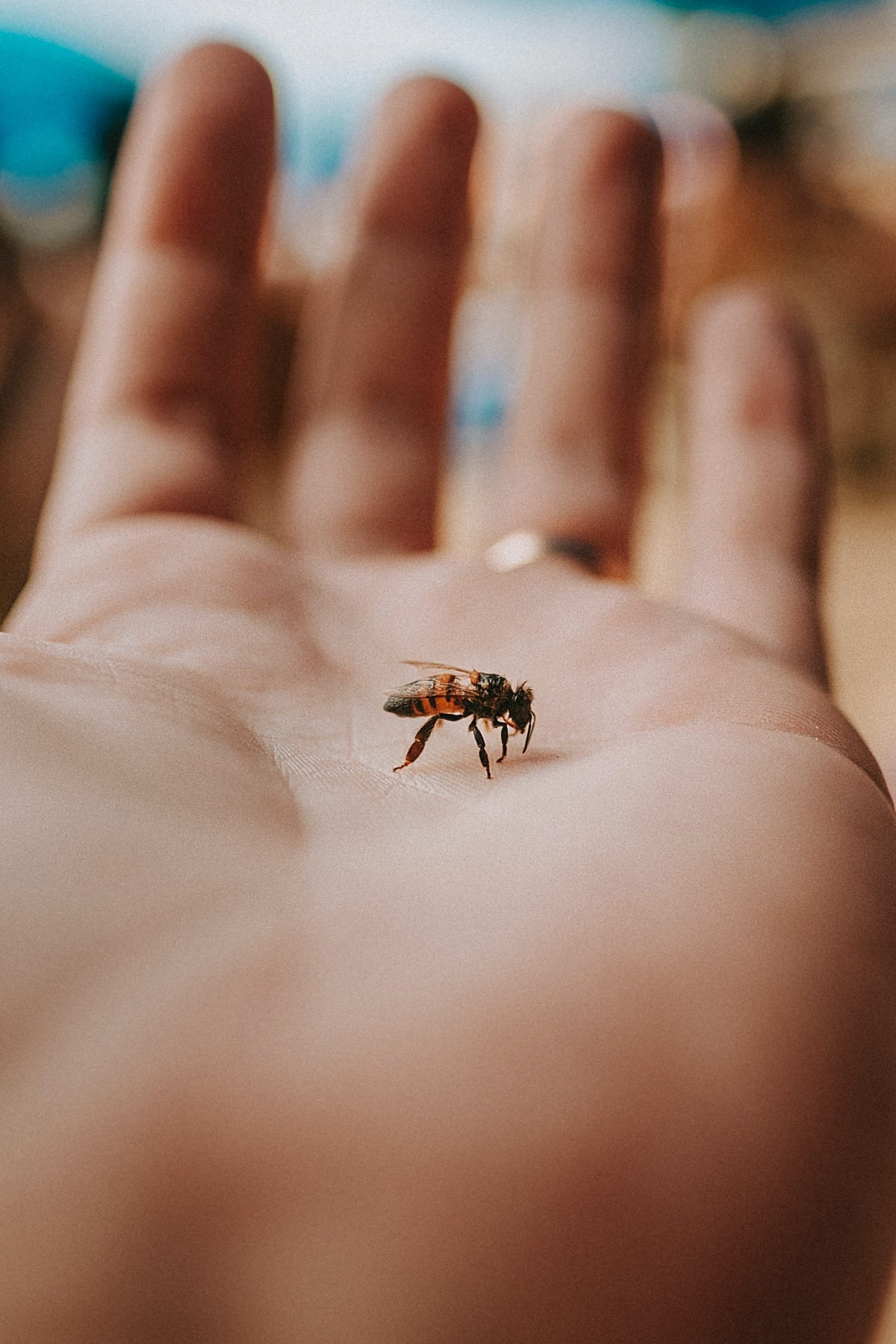
A honeybee has a barbed stinger, kind of like a fishhook. When it gets you, the stinger catches in your skin. As the bee flies away, it literally rips its own stinger and venom sac out, leaving them behind. This is a one-and-done deal for the bee, but the problem for you is that the venom sac can keep pumping venom into the wound for up to a minute. That’s why speed is everything.
Wasps, hornets, and yellow jackets are a different story. They have smooth, needle-like stingers. They can sting you, pull it out, and sting you again. And again. That’s why one angry wasp can be a much bigger problem than one bee.
The venom itself is a mix of proteins designed to cause pain and inflammation. Bee venom has a nasty component that destroys cell membranes, causing that immediate, fiery pain. Wasp venom is loaded with its own unique compounds, including some that are powerful pain-causers and major triggers for allergic reactions. For most of us, our body contains this attack to one small area. But for someone with an allergy, that venom kicks off a full-blown, body-wide meltdown.
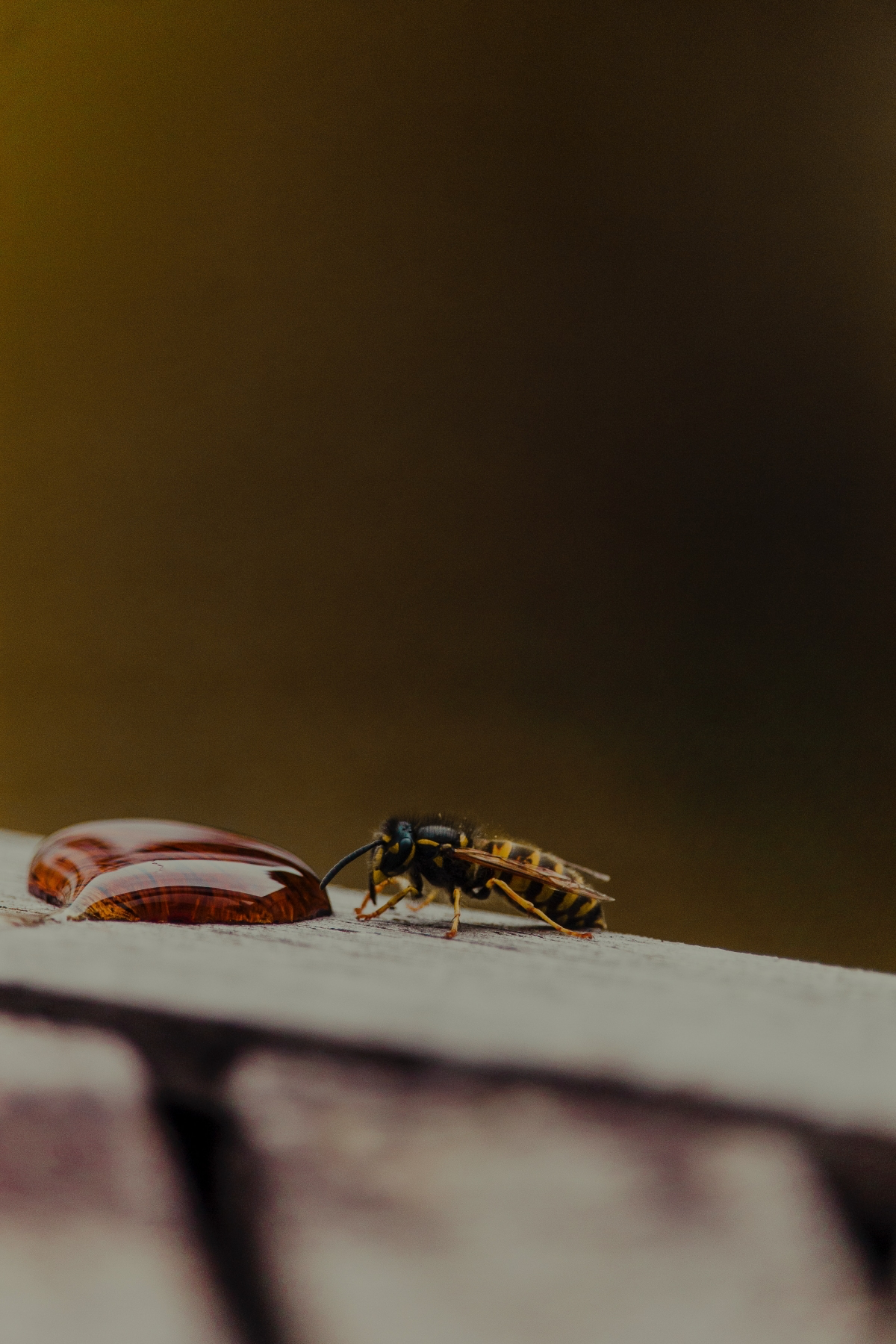
The First 5 Minutes: Your Action Plan
What you do immediately after a sting will make the biggest difference in how much it hurts and swells. This is the procedure we follow in the field.
- Get Away From the Area. Seriously, this is step one. When an insect stings, it can release alarm signals that basically scream “attack!” to its buddies. Calmly walk at least 50 feet away before you even think about treating the sting.
- Get the Stinger Out (If It’s a Honeybee). You’ll see the little stinger and venom sac still in your skin. Get it out FAST. You might have heard you have to scrape it out with a credit card to avoid squeezing more venom in. While scraping is ideal, honestly, speed beats perfect technique here. Use a fingernail, the edge of a key, or the back of a butter knife to give it a quick, horizontal scrape. If you have nothing else, just pull it out with your fingers. Getting it out in 2 seconds is way better than spending 30 seconds looking for the perfect tool.
- Clean the Site. Once the stinger is out, you’ve got an open wound. Gently wash it with plain soap and cool water to prevent infection. No soap? An alcohol wipe or a dab of hand sanitizer works in a pinch.
- Apply Cold. A cold pack or a bag of frozen peas wrapped in a thin towel is your best friend. Cold numbs the pain and, more importantly, shrinks the blood vessels, which helps slow the spread of venom and reduce swelling. Aim for 15-20 minutes on, 20 minutes off. Even a cold can of soda can help if that’s all you have. Just never put ice directly on your skin—that can cause frostbite.
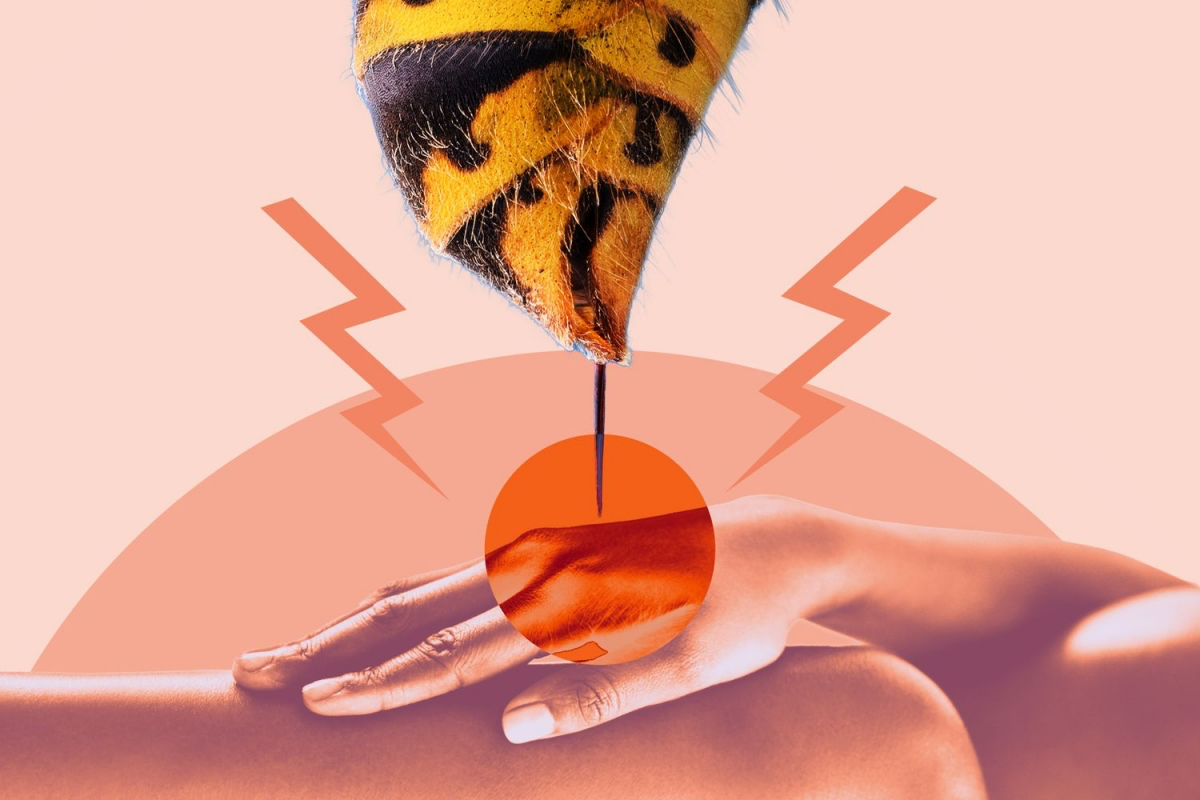
How Bad Is It? Normal Sting vs. Real Emergency
After you’ve done the initial first aid, you need to watch how your body is reacting. It’s usually a minor issue, but you need to know what to look for. Here’s a quick reference to help you tell the difference:
- Swelling just around the sting? -> This is a normal local reaction. Annoying, but not dangerous.
- Your whole hand is swollen from a sting on your finger? -> This is a large local reaction. It’s more dramatic but still not life-threatening as long as the symptoms stay local.
- Swollen hand PLUS hives on your chest or trouble breathing? -> This is a systemic (allergic) reaction. Call 911 immediately.
1. Normal Local Reaction
This is what happens to most people. You’ll get a sharp, burning pain, a raised red welt, and some itching. The pain usually fades in a few hours, but the swelling might get a bit worse over the next day or two before it starts to get better. Totally manageable at home.

2. Large Local Reaction
Some people have a much bigger reaction without it being a true, life-threatening allergy. A sting on the ankle could make the whole lower leg swell up. It looks alarming and can be super uncomfortable, sometimes lasting for a week, but as long as the swelling is the only major symptom, it’s not an emergency.
Quick tip: For these large reactions, an over-the-counter antihistamine is a huge help. For daytime relief without drowsiness, try something like cetirizine or loratadine. If the itching is keeping you up at night, diphenhydramine is a good choice as it will help you sleep.
3. Systemic (Allergic) Reaction & Anaphylaxis
This is the one we take seriously. Anaphylaxis is a medical emergency where the immune system goes haywire, and it can happen within minutes. The rule of thumb I teach is to look for symptoms in at least two different body systems away from the sting site.
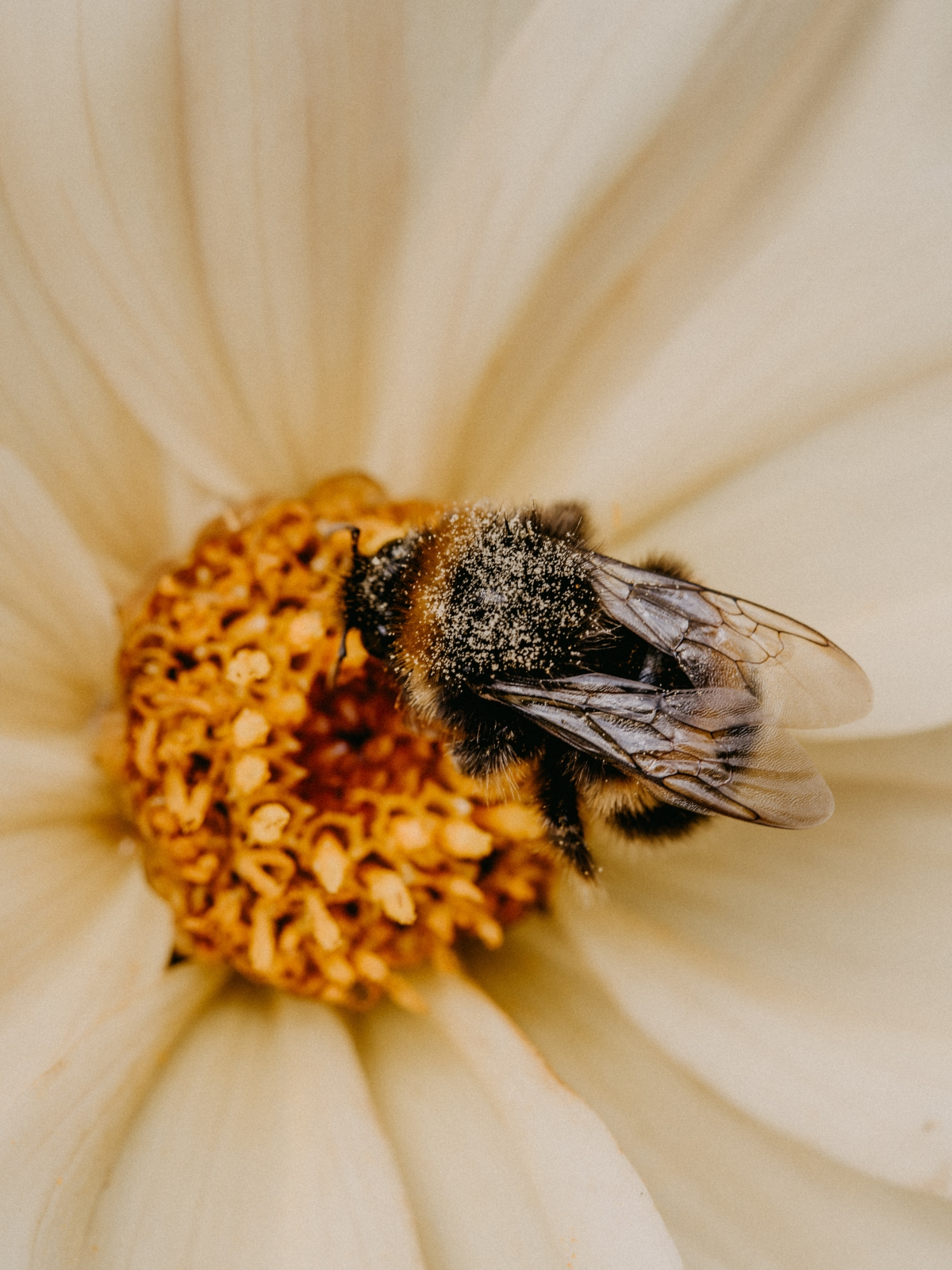
Call 911 immediately if you see ANY of these signs:
- Skin: Widespread hives, flushing, or itching far from the sting. Swelling of the lips, tongue, or face is a major red flag.
- Breathing: Wheezing, coughing, tightness in the throat or chest, or a hoarse voice. This means the airway is closing.
- Circulation: Feeling dizzy or faint, a weak and fast pulse, or passing out.
- Stomach: Nausea, vomiting, or sudden stomach cramps.
- Mental: A sudden feeling of intense anxiety or a sense of impending doom. This is a very real symptom caused by the body’s chemical freak-out. Don’t dismiss it.
I once got a call for a landscaper who’d been stung on the arm. By the time we arrived, maybe 10 minutes later, he was covered in hives and couldn’t get a full sentence out. His wife saw it happening and called 911 right away. She absolutely saved his life. Don’t wait or wonder—if you see these signs, make the call.
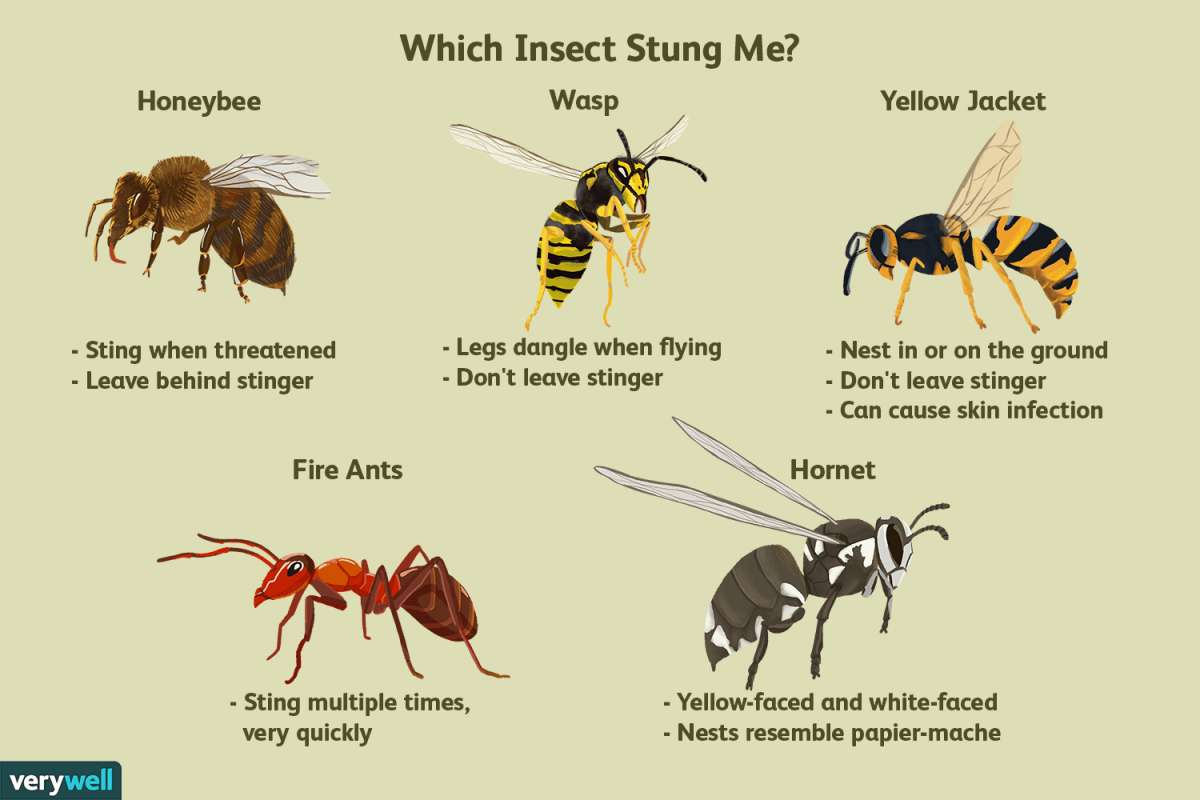
Your At-Home Treatment Plan & When to Get Help
For normal and large local reactions, you can do a lot to make yourself more comfortable. This is why having a little “sting first aid kit” is so smart. You can assemble one yourself for about $20 from any pharmacy.
Your Sting First Aid Kit Checklist:
- Pain Relievers: Ibuprofen or acetaminophen for the pain.
- Antihistamines: Both a non-drowsy option (loratadine) and a drowsy one (diphenhydramine) for itching.
- Topical Cream: A 1% hydrocortisone cream can do wonders for the local itch and redness. It usually costs between $5 and $10.
- Alcohol Wipes: For easy on-the-go cleaning.
- Oh, and if you can, elevate the arm or leg that got stung. Gravity is a free and effective tool for reducing swelling!
By the way, you might hear about old folk remedies like putting mud, tobacco, or a cut onion on a sting. My advice? Skip them. They aren’t proven to work and can introduce bacteria into the wound, causing a nasty infection. Soap and water is always the safer bet.
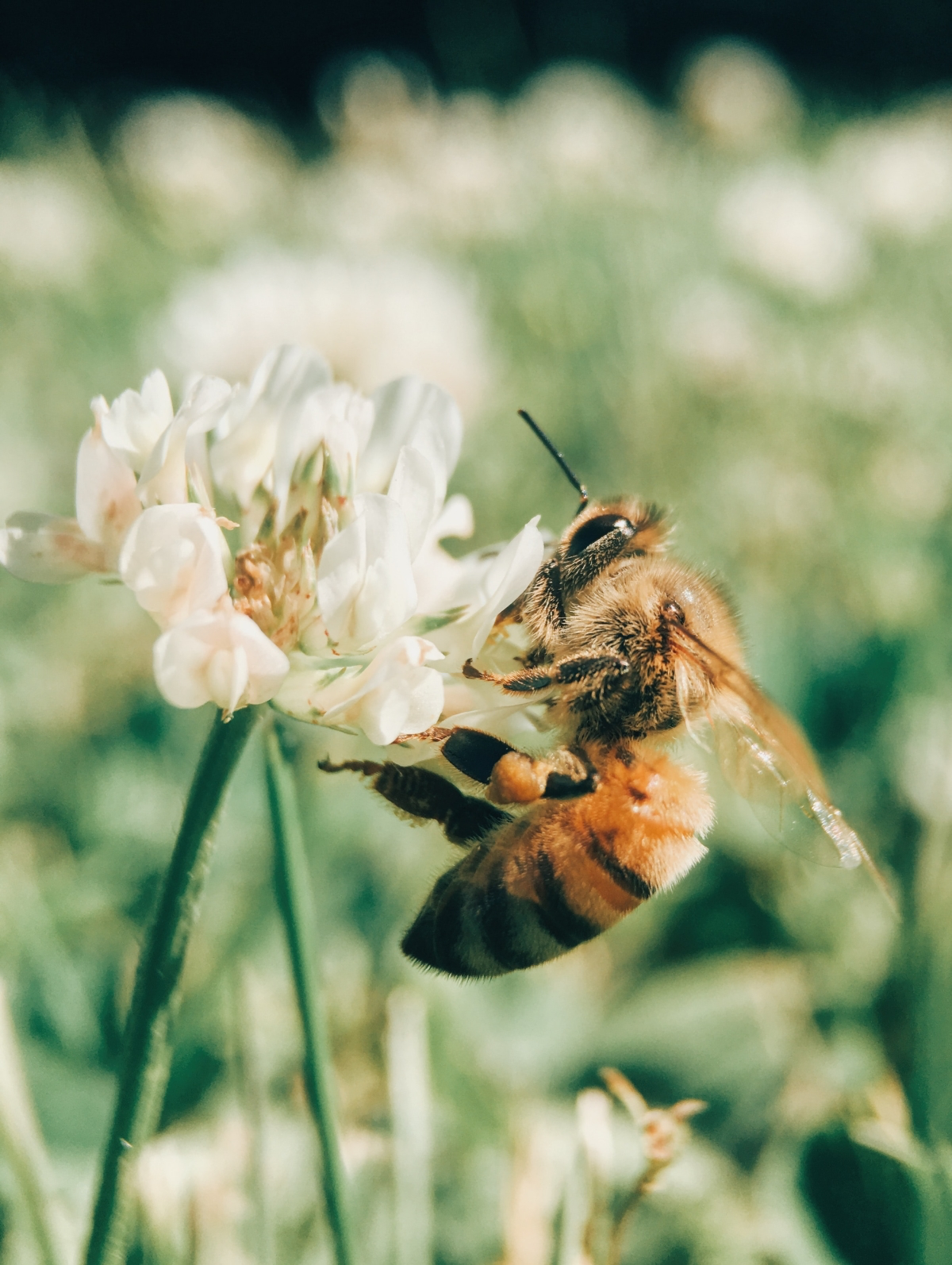
When a “Normal” Sting Needs a Doctor
Even without an allergy, you should head to a doctor or the ER in these situations:
- You got stung a LOT. More than 10-20 stings can cause a “toxic reaction” even in non-allergic people. Think of it like this: one sting is a drop of venom, but 50 stings is like getting a shot of it. It’s basically poisoning, and it can cause muscle breakdown, kidney problems, and make you feel horribly sick.
- You were stung inside the mouth or throat. The swelling from even a normal reaction can block your airway. This is an immediate emergency room trip.
- It looks infected. If the area gets more red, painful, or starts draining pus a day or two later, you might have a secondary infection that needs antibiotics.
A Special Note for Kids
Getting stung is extra scary for little ones. The reactions look the same, but their fear and pain can be intense. I remember one kid at camp who got stung on the foot and was just wailing. We got the stinger out, cleaned it, and put a cold pack on it. While the cold pack did its job, we also gave him a popsicle. The cold from the popsicle and the sweet treat completely distracted him from the pain. Sometimes, a little creative distraction is the best medicine for those first five minutes!
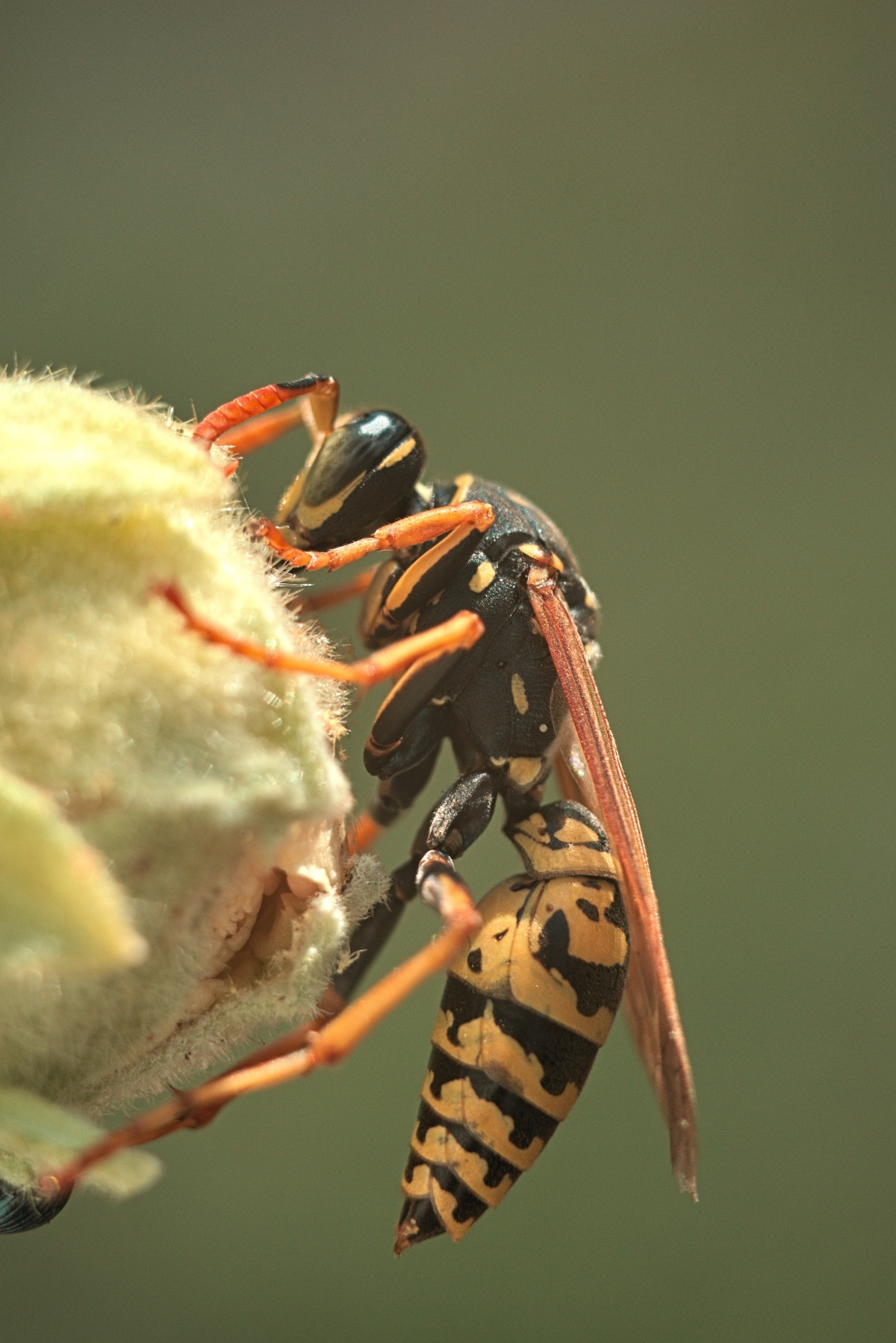
Heads up! When it comes to medications like antihistamines or pain relievers for children, always check with your pediatrician or pharmacist for the correct dosage. Never guess based on adult doses.
For Known Allergies: The EpiPen Is Non-Negotiable
If someone has a known severe allergy, an epinephrine auto-injector (like an EpiPen) is their lifeline. It’s the only thing that can reverse anaphylaxis. It works fast by tightening blood vessels to raise blood pressure, relaxing the airway muscles to make breathing easier, and supporting the heart.
If you have to use one, it’s simple: pull off the safety cap, press the tip firmly against the outer thigh (you can do it right through jeans), and hold it for about 3-5 seconds until it clicks. Afterwards, rub the area for 10 seconds.
And this is critical: Using epinephrine is the first step, not the only step. Call 911 immediately after using it. The effects can wear off in 15-20 minutes, and the allergic reaction can come roaring back. The person needs to be in a hospital.
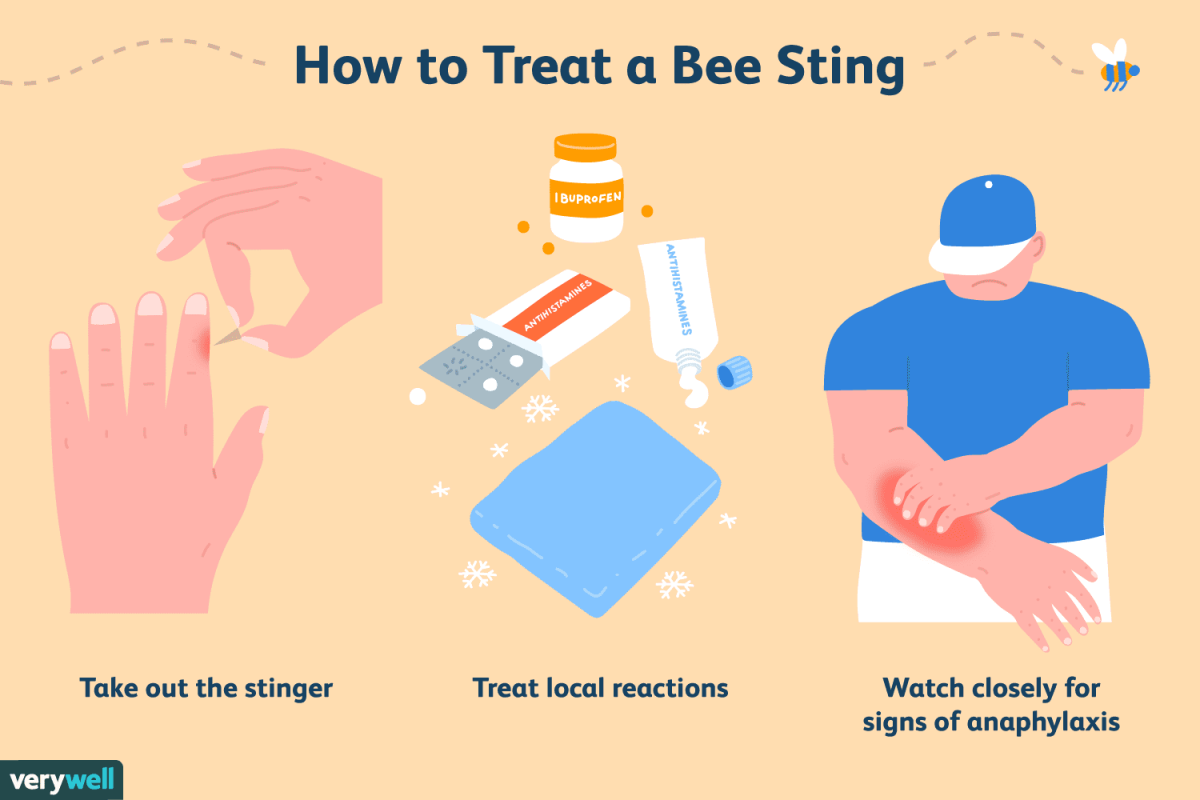
How to Not Get Stung in the First Place
The best treatment is avoidance. Yellow jackets love to build nests in the ground (watch out with lawnmowers!), while paper wasps build those papery, open-comb nests under the eaves of your house. Before you have a picnic or let the kids play, just do a quick scan of the area.
A few more pro tips:
- Keep food and sweet drinks covered when you’re outside. A wasp in a soda can is a classic and painful mistake.
- Avoid wearing bright, floral-patterned clothing or strong perfumes. You’re not a flower, so don’t try to smell or look like one.
- If a single bee or wasp is buzzing around you, don’t swat at it. That’s a universal sign of aggression. Just stay still or walk away slowly. It will probably lose interest and fly away.
Backcountry Pro-Tip: If you’re hiking miles from cell service and someone has what looks like the start of a serious reaction, give them an oral antihistamine immediately. It won’t stop anaphylaxis like epinephrine does, but it can sometimes slow the reaction down enough to buy you precious time. Your number one priority is still evacuation to get professional medical help, but it’s a good trick to have in your back pocket. Be prepared, stay aware, and you’ll be able to handle whatever the great outdoors throws at you.

Inspiration:
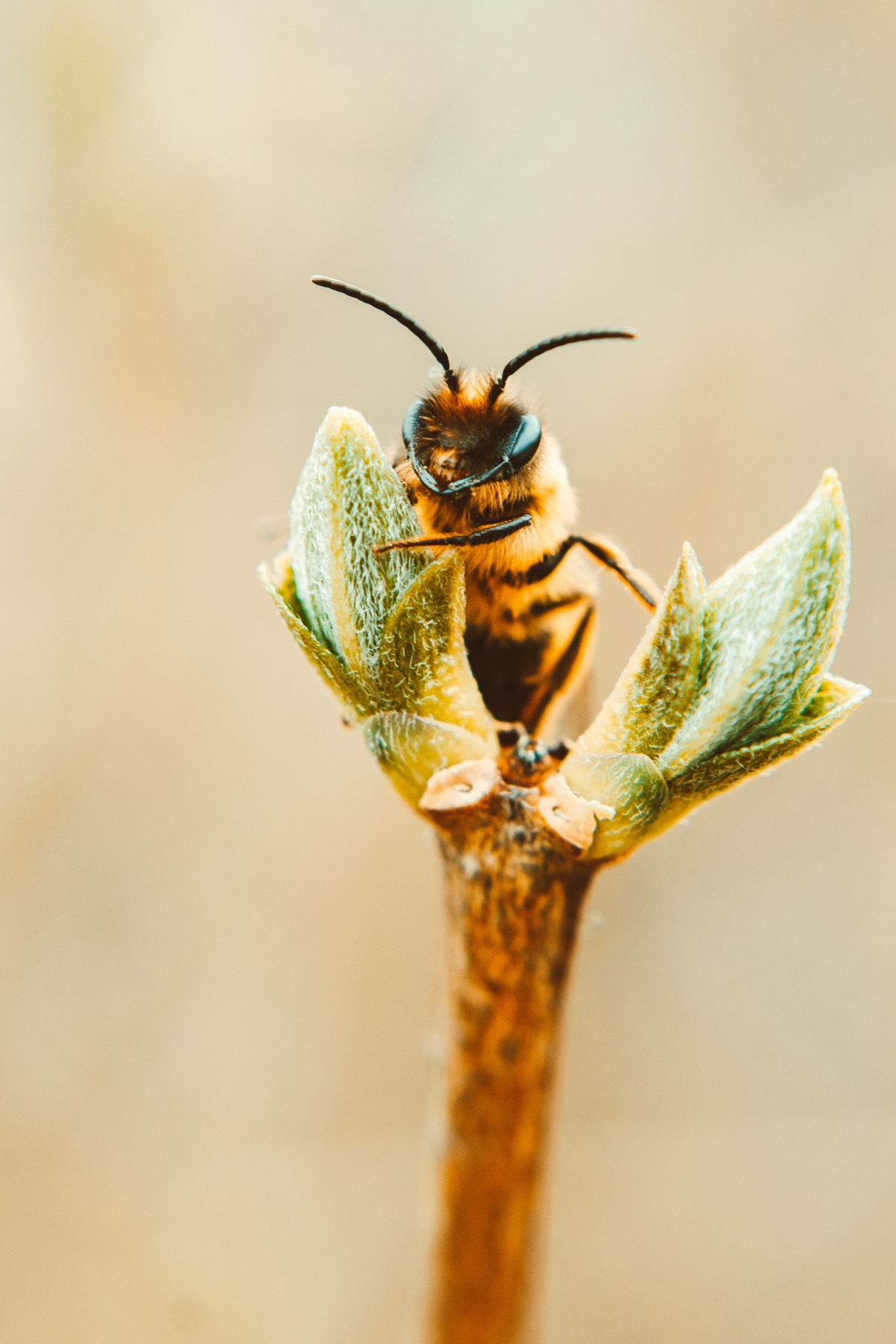
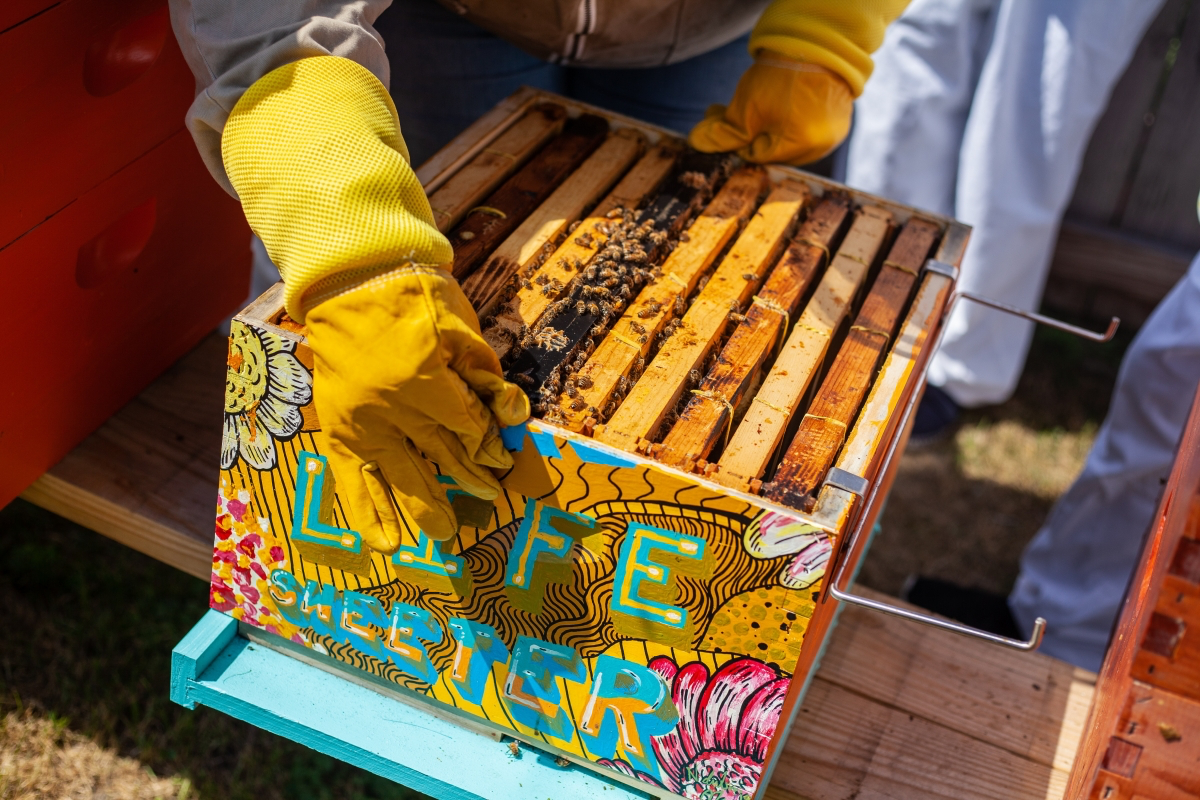
While knowing how to treat a sting is crucial, creating a less inviting space for wasps is your first line of defense. A few simple adjustments can make your backyard BBQ much more peaceful.
- Cover food and drinks: Sweet sodas, fruit, and open protein sources are a buffet for yellow jackets. Use drink covers and keep food in sealed containers until it’s time to eat.
- Rethink your outfit: Wasps can be attracted to bright colors (especially yellows) and floral patterns. Opt for more muted, neutral tones when gardening or picnicking.
- Manage garbage: Securely seal all trash cans. A single open can become a major gathering spot for wasps in search of an easy meal.
- Avoid strong perfumes: Sweet-smelling lotions and hairsprays can be mistaken for nectar. Go for unscented products when spending significant time outdoors.
Beyond a simple bandage, what should a dedicated
